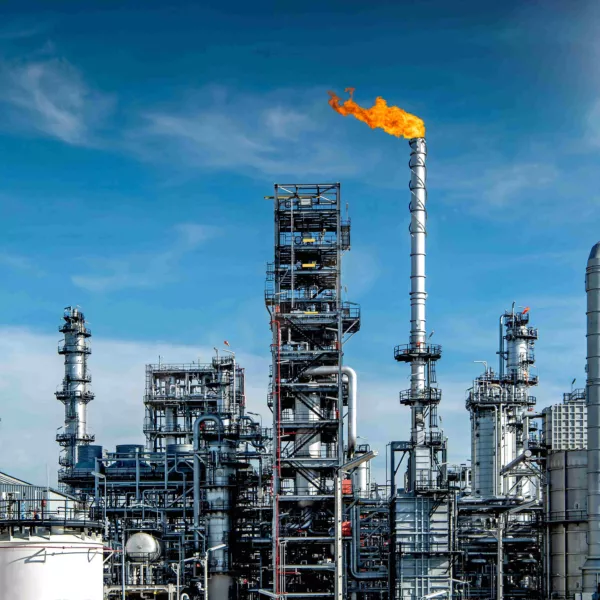All you need to know about the new WGC emission limits
In this article, we're taking a dive into the BAT Conclusions for Common Waste Gas Management and Treatment Systems in the Chemical Sector (WGC). This regulation specifically addresses channelled and diffuse emissions to air from the production of chemicals, from polymers and synthetic rubbers to fine chemicals.
Following the new STS emission BREF , these WGC BAT Conclusions are the outcome of the relevant BREF document, condensing the information exchanged between EU Member States, the industries concerned, and non-governmental organisations over the last few years on environmental management of the operations. So, read on to find out if, how, and when this new directive may affect your business. As a bonus, we’ll also share a tip to prepare for that.
What is the timing for the implementation of the WGC BAT Conclusions?
Although the WGC BAT Conclusions were published in 2022, their requirements are not binding yet. Regardless of the EU Member State your company is based in, the first step of the BAT Conclusions’ implementation is their adoption into the national law. Then, these measures will have to be implemented within four years, i.e. by 2026. That’s when your local permitting authority might knock on your door, requiring you to comply with the much stricter environmental rules. But don’t worry. We have the solutions they’re asking for.


Which industrial activities are mainly impacted by the WGC BAT Conclusions?
Your industrial activity falls within the WGC BAT Conclusions’ scope, if it is one of 4.1 to 4.6 of the Annex I to the IED, Directive 2010/75/EU. The list includes the production of several types of chemicals:
- Organic (e.g. hydrocarbons, plastic, synthetic rubbers, dyes and pigments, etc.);
- Inorganic (e.g. sulphur compounds, metal oxides etc.);
- Pharmaceutical products including intermediates;
- Plant protection products or biocides;
- Explosives.
What does the new WGC BAT Conclusions mean for your business?
If your activity is among those covered by the WGC BAT Conclusions, you should be aware of the much stricter BAT-associated achievable emissions levels (BAT-AEL) (for channelled emissions) introduced for different compounds, including but not limited to:
- Total volatile organic carbon (TVOC): down to 1 mg/m³;
- Benzene/ Toluene: down to 0.5 mg/m³;
- Chlorinated solvents: down to 0.5 mg/m³;
- Ethylene/ propylene oxide: down to 0.5 mg/m³;
- Ammonia (NH3): down to 2 mg/m³;
- Hydrogen sulphide (H2S): down to 1 mg/m³.
Moreover, harsher requirements on diffuse/ fugitive emissions are being imposed, often making solvent mass balances necessary.
Activated carbon is Best Available Technology for emission control
Adsorption on activated carbon is one of the Best Available Technologies (BAT) recommended by the EU regulation. In particular, this purification route is ideal for the thermal treatment of waste gases containing chlorine and/or chlorinated compounds.
In addition to this, DESOTEC has successfully applied activated carbon-containing mobile filters to remove a wide range of chemicals from industrial air emissions such as VOCs, H2S, benzene, dichloromethane (DCM), and many more. When channelling previously diffuse emissions, for example, production hall ventilation, mobile activated carbon filters are one of the best choices, because of the high volume flows at low pollutant concentrations.
Here are a few examples:
Once saturated with these pollutants, DESOTEC collects the activated carbon filters from the customer site, transports it to their facilities for reactivation (called regenerative adsorption in BATC language) after which the activated carbon filter is fit to use again.
Thanks to this circular strategy, our purification solution can be much more climate-friendly than thermal or other processes. Besides being more sustainable, our mobile filters are also more flexible. Designed to be plug-and-play, they can be tailored to fit rapidly changing needs, which is the case of stricter permission limits being implemented and decreased production downtime (30 minute changeover time).
Conclusions
2026 is not so far away, so it may be worthwhile to check whether you need a suitable solution to reduce your operations emissions and stay compliant with the new limits. Being one of the emission control technologies recommended by WGC BAT Conclusions, activated carbon filtration will help you comply with the latest regulations requirements.
Call us today to discuss your needs, so that our engineers can recommend the most appropriate filtration solution.
How can DESOTEC help you?
To discuss how DESOTEC can help purify your air emissions to comply to the latest regulations, contact the team today.
Contact our expertsHow can DESOTEC help you?
To discuss how DESOTEC can help purify your air emissions to comply to the latest regulations, contact the team today.
Contact our experts-
Chemical industry
Circular solutions to purify chemicals, air emissions and wastewater, protecting occupational health, the environment, and your business. -
Air & gas purification
Our sustainable filtration solutions ensure air purification, odour control, and high quality process gases such as biogas and biomethane. -
Our unique service
Our closed-loop, full-service model is as unique as your business needs. We’ll define the right filtration setup and safely recycle filtration waste, making it easy to go green.


